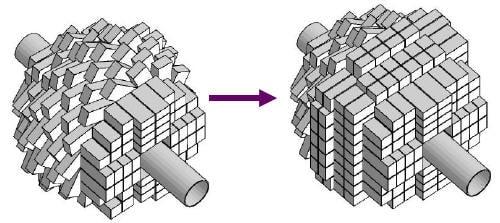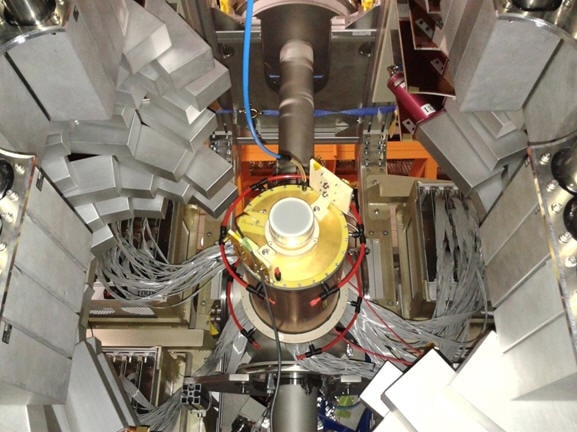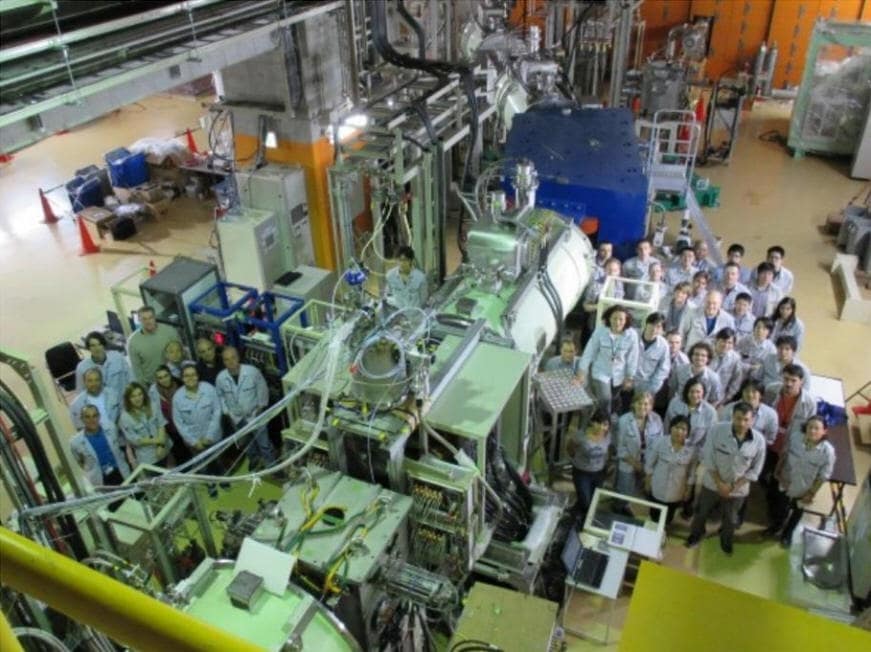NaI (Tl) detector array
This detector project is in collaboration with SUNFLOWER Collaborators [Learn More]
The present gamma-ray spectrometer used at RIKEN is DALI2 [1] which consists of about 186 NaI (Tl) scintillators arranged in configuration shown in Fig.1 (left). This detector array was shown as the cover of Nature journal Vol 502. To significantly improve the detection efficiency, HKU will build another gamma-ray spectrometer using 60 NaI(Tl) scintillators and the associated electronics. Compared to DALI2 detector, these 60 NaI(Tl) detectors at HKU are designed in an optimized shape and size for compact configuration and better light collection as well as improved detection uniformity.

For our measurements in this project, the HKU detector array will be transported to RIKEN to couple to DALI2 in a new configuration with 35% increase in total detector number as shown in Fig 1 (right). This configuration is chosen, based on GEANT4 simulations, as the optimization configuration for acceptance and add-back factors to enhance the detection efficiency, particularly to the high-energy gamma-rays. This new gamma-ray detection array would allow an increase in detection efficiency for 1-MeV and 4-Mev gamma and significantly enhance the gamma-gamma coincidence efficiency. This gamma-ray detection array coupled to the MINOS target device and ZeroDegree Spectrometer [3] (or SAMURAI Spectrometer [4]) at RIKEN Nishina Center provides the unique opportunity in the world for the in-beam gamma-ray spectroscopy measurements of the very exotic nuclei with sufficient statistics and resolutions achieved to explore the new structure and nuclear forces in nuclei.



